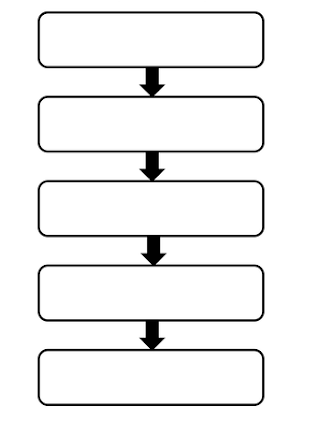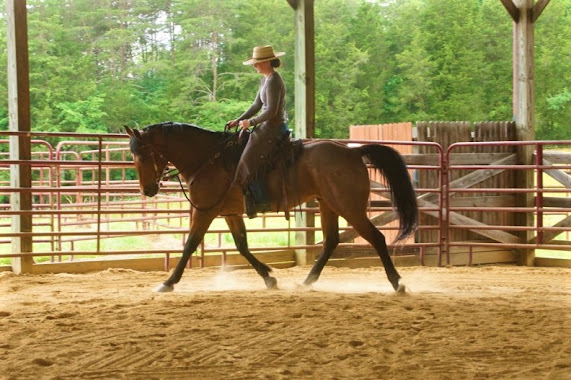So why IS it that we humans lack so much imagination when it comes to helping our horses figure out what we want? And why is it so hard to step off the well-worn path and venture into experimentation? Why do we have such a hard time trusting what our animals are telling us, especially when the message is that what we're doing isn't working?
I have a few theories:
1) People are still pack animals - we rely on each other even in our modern world. There is a natural tendency to defer to those who seem like they know what they are talking about, especially if that person has some notoriety, following or is where we want to be in our equine pursuits. We strive to emulate what we see as "success", and that makes it much harder to go against the grain.
2) Speaking of success: society as a whole values results as rapidly as possibly. With our complex, highly evolved brains, we're very good at getting things to work for us, and less good at the reverse. We commonly define success in terms of what we are able to get done, but because we are pack animals we also highly value others recognizing what we are getting done. Our innate need to belong is often a driving force behind how we view success versus failure.
3) We're working with a species that doesn't speak English, operates under a completely different set of social rules and norms and has very little in it for them where pairing with humans is concerned. While domestication has - in our eyes, at least - decreased or eliminated many of the stressors that horses would face living a life in the wild, it's added numerous others. From the horse's point of view, many of us are not doing enough to address their worries and needs in domesticated life while demanding they perform.
And finally, arguably the most important point:
4) Underneath all of our ability to think rationally is that "lizard brain" left over from millions of years of evolution, the piece that reminds us we are mortal, that we could die, that we don't have control, that we should be afraid. I find fear to be a HUGE motivator for why people get into conflict with their horses and sometimes abandon their goals or just accept a situation at face value when it could in all actuality be solved. Or, the other side of the coin, why people accept and pursue increasingly harsh and authoritarian methods of getting horses to do what we want, because the alternative is an animal that asserts their own will and could hurt us OR worse (for many people, I do believe), showcase to anyone watching that we don't having a flying clue what we're doing.
And so we come back to that statement from part one, our focus on getting to the goal is the very thing that's creating the conflict. More specifically, our motivations for getting to that goal, and the path on which we're traveling, becomes the source of the conflict.
At the end of the day, it's not that goal-setting is bad. Goals are important: they give us a roadmap for where we are headed and help us to make sure we're doing things in a logical, orderly way. Where you run into problems is when your roadmap is too rigid or mono-directional. Most of us tend to set goals like this:
Simple flowcharts like this work well for things like recipes. You add 1/2 cup of A, mix it with a 1/2 cup of B, and you get C. But this type of flowchart when used to envision goals does not take into account any additional variables. It relies on fixed components that do not change. It can only go in one direction, and in order to be successful you literally HAVE to carry on or endlessly work in the same step. Living entities, by virtue of being alive and thus ever-changing, do not operate within this sort of system. Instead, we have to envision something a bit more like this:

Hark, possibilities abound! There is literally no end to what you might try to get to where you want to be. You might even find you need to go all the way back down to the root of the matter (pardon the pitiful attempt at humor, I can't help myself) and get that fixed before you can make any real progress. But most importantly, you aren't binding yourself or your horse in a system that isn't designed for either of you.
Now that I've done all this metaphorizing and wielding of words, what does this actually look like in the real world? Lately, for me, it's meant riding my horse like this:
Pretty sure he was nomming on something tasty...
Soni possesses an immense sensitivity that is both his greatest strength as well as his Achilles heel. He is a joy to ride when that sensitivity doesn't bleed into nervous anticipation, but more often than not he is simply trying to stay out of trouble because experience has taught him if he doesn't get it right the first time he's going to be hustled and that causes him great worry. Riding him is often akin to walking an a tight rope made of fishing line: do too much and you've caused him to feel rushed, do too little and he starts to think he's missed something and begins anxiously offering up whatever he can think of out of concern for getting in trouble.
I normally ride Soni in a simple snaffle and he can offer a great deal of softness and collection in just this basic bit. Over the last few months I've been starting to ask more of him in transitions, which includes not being allowed to push on the bit or use it for support: now he needs to offer a little bit more lift and self-carriage and pay more attention to my seat and leg. This caused him to start to worry about that bit and start ducking behind it to avoid meeting the pressure should he lean or miss the cues from my seat (remember what I said about walking that fishing line tight rope?) This also means while he's a noodle in the top 2/3 of his neck, he's bracing at the base and unable to really lift in front.
It got to the point where some days, if he was sufficiently concerned, even just subtle movement of the reins would cause him to bob his nose in and out in anticipation that he might get in trouble for not getting out of the way in time. At a standstill. When nothing was being asked of him.
So a couple weeks back I started riding him in the rope halter again. I took away the bit entirely as well as my ability to overmanage the reins (I know myself well). His relief was palpable as it got clarified that I really *did* want him to stretch down to meet my hands. Every 3rd or 4th ride I put him back in the snaffle bridle and make darn sure I don't overcorrect him. He's much happier. Eventually he'll go back to the snaffle bridle entirely once I'm sure he believes this is all real.
I could persevere. I could push through. I could just keeping riding in the bit and chalk it up to the change of the seasons, that he needs more time to adjust to the increased expectations, that he is waking up on the wrong side of the hay, that I need to somehow do moremoremore and it'll get better. I could just keep chugging along towards my goal of asking him for more advanced maneuvers - after all, wouldn't that demonstrate my success in educating this horse?
At the end of the day, I ride because I love the connection I form with my horses. I ride because they offer me a freedom I cannot find on my own two legs. I ride because horses offer a chance to exist authentically in the moment, something sometimes tricky to find in the company of other humans. These are the things that are important to me and thus supersede all other things and form the foundation of any goal I might set. So when things aren't working, when I feel like we did a 180 and are moving farther from where I want us to be, I take a deep breath and ask myself: can I do less here? Am I being clear? Am I being fair? Did I overlook something important? Am I asking too much in this moment? Can I break this down in a way that is more palatable?
To this point, reconfiguring the path has not led me astray. Sometimes the best way through something tough is just to go around.




Comments
Post a Comment